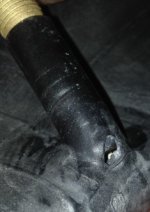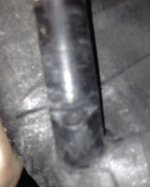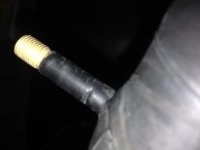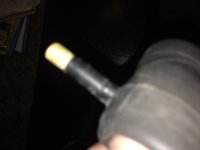This is the third kenda thorn proof tube that has a hole in the valve stem I install regular thinner tube and I never get the problem it seemed when I installed the tube it wouldnt inflate as fast so I increased the psi to the tire recommended psi and the slack between the tire and tube was fixed but at lower psi it does not seem like it will fix itself the valve hole on the rim I always check and it was fine I will have to check it thoroughly this time. All times the hole on the tube has been at the base of the stem at the transition point and I always make sure the shrader valve is fitted properly with proper psi added the valve did not rotate over was brand new used for one mile. I will cut the tube up and use as a tire liner, I have 2 of them third one is in the pile such a shame another $15 wasted it held air for a few days when I was not riding it but did not last 1 mile bought from national department store not ebay looks the same as the pic  “Fool me once, shame on you. Fool me twice, shame on me. Fool me three times, shame on both of us.”
“Fool me once, shame on you. Fool me twice, shame on me. Fool me three times, shame on both of us.”
 “Fool me once, shame on you. Fool me twice, shame on me. Fool me three times, shame on both of us.”
“Fool me once, shame on you. Fool me twice, shame on me. Fool me three times, shame on both of us.” 







